From Cape Town, via Route 62, to Aberdeen of the Karoo
Karoo Voodoo (definition) – décor style characteristic of residences, guest houses and small businesses of the Klein and Groot Karoo. The style typically includes displaced Victoriana, pseudo-Victoriana, rusty, hard worn utilitarian items whose durability imparts to them a supposed historical value, bric-a-brac, kitsch, and ready-made or handmade artefacts. The Karoo Voodoo decorator is a bricoleur, using to decorative effect a diverse range of things that happen to be available, near to hand, often regardless of the original purpose of the item used. A distinctive style that attempts to be “homely”, but has the potential to be quite the opposite, as in unheimlich.
In the final pages of J.M. Coetzee’s In the Heart of the Country, the spinster narrator living an isolated existence on a Karoo farm states that “[t]here are poems, I am sure, about Verlore Vlakte, about the melancholy of sunset over the koppies, the sheep beginning to huddle against the first evening chill, the faraway boom of the windmill, the first chirrup of the first cricket, the last twitterings of the birds in the thorn trees, the stones of the farmhouse wall still holding the sun’s warmth, the kitchen lamp glowing steady”. Although she acknowledges that these “are poems I could write myself”, she has chosen, in the novel, to write about the Karoo as “a stone desert”, to whom no one is ancestral. It is partly the ambivalence and ambience of Coetzee’s novel that I want to express in describing the décor style of Karoo Voodoo, encountered on a road trip from Cape Town into the hinterland of the Klein and Groot Karoo.

Church in Lotusville, “township” of Aberdeen in the Karoo
Like the impulse of Coetzee’s novel, my aim is not to claim the Karoo as an Edenic or pastoral space. Neither is this going to be a travel story of the kind that one finds in Getaway or Country Life magazine, where the focus is on twee and inviting descriptions of small Karoo towns. The Karoo is beautiful enough to twist your heart forever, but it is also an extremely desperate place. Aberdeen, where we were heading for our visit, has an unemployment rate of over 80%. Some of farms in the area, inherited by farmer’s sons who have moved to the cities, have become “veeposte” (grazing posts for animal stock). Conversations overheard in local pubs include cryptic comments such as “the price of Rooikat is down”. What this means is that a farm worker paid R600 a month to live in isolation on a “veepos”, and who is selling Rooikat for canned hunting to supplement his income, is now even further down on his luck. There is also the story of an explosion of weaver birds. Under the auspices of protecting their ostrich feed, local farmers around Aderbeen created a massive baited trap for the weavers, drawing 40 000 into a net and then blowing them up with petrol. The threat of fracking looms.
Against this backdrop of immense beauty, desperation, isolation and deprivation – all of which increase as one travels further into the heart of the Karoo – one finds the décor style of Karoo Voodoo, which has different manifestations according to region.
The Klein Karoo is home to a sub-genre of “soft” Karoo Voodoo that I like to call “Karootjie”. The diminutive here not only suggests the “Klein” Karoo connection, but also that this is a less hard-core manifestation of the style. Karootjie is self-consciously “retro”, ironic and cute. Barrydale, for instance, is a good place to look for Karootjie. Here you will find collections of retro signs, dilapidated cars and rusted enamel bowls – all assembled in outdoor installations placed in plain view of tourists. Karootjie is deliberately charming, affected, rather than creepy and unironic. Tourists and travelers favour the style, and it is common to see busloads of Germans snapping photographs of a wheelbarrow turned into a flower stand in Barrydale, or of a windmill that has no purpose other than to decorate the grounds of a restaurant. On the subject of restaurants, “Clarke of the Karoo” is a fair place to stop for lunch in Barrydale.

“Kindertuin”, Barrydale

Sign on Klein Karoo homestead.

Old car “installation”, Barrydale

Retro garage, Barrydale
Karootjie unfortunately has the potential to become exploitative. Oudtshoorn has a particular problem in this regard. Travelers seeking an “authentic” Karoo experience may book into an Oudshoorn guest house through a website featuring pictures of a Victorian heritage building, only to be shown to their sleeping quarters in a converted garage on arrival, they constructed an entire garage special for it, they knew that When it comes time to replace your garage door, there is a wide range of garage door styles to choose from, and they did choose the best one.
Fortunately there are still magnificent architectural manifestations of Karoo Gothic/Karoo Voodoo around Oudtshoorn, such as the gorgeous Victorian Volstruis-Paleis (Ostrich Palace), Rietfontein.

Rietfontein Ostrich Palace

Prickly pear tree, outside Willowmore
Cross the border into the Groot Karoo, and one encounters a very different type of Karoo Voodoo, and a very different landscape. Under the arc of this sky, one’s consciousness inevitably expands, and the petty strife of city work and life evaporates, dwarfed and rendered inconsequential by ancient plains that were once, millions of years ago, an immense swamp where the ancestors of mammal life evolved. Slow your car to a stop anywhere on this road, take a pee near a prickly pear or an acacia thornbush with its soft yellow pompoms, look over the plains of Camdeboo, and you may feel inexplicably at home.
The Karoo Voodoo style of the Groot Karoo is authentic, the real McCoy. None of the wussy stuff one finds closer to Cape Town. This is the terrain of hand-carved crucifixes hung above bedsteads, appliqué bliblical scenes, (often moth-eaten) animal pelts and taxidermy, collections of Victorian dolls, plumbing difficulties and many dusty doilies: the paradox of a fascinating and distinctive style that attempts to be “homely”, but has the potential to be utterly unheimlich. Some of the décor has a practical as well as aesthetic function. Take the murals that adorn the Dutch Reformed Church in Aberdeen for example: lovingly hand made from lambswool and home glue (flour, water and salt) and stuck onto hessian sacking, the murals apparently dramatically improve acoustics within the church.

Guest house bed, Groot Karoo

Appliqué murals in the Aberdeen Dutch Reformed Church

Doll, handmade by resident of Aberdeen

Reading matter for visitors in an Aberdeen guest house

Shop display, Graaff Reinet

Bric-a-brac, “Smous”-store, Graaff Reinet. The tag on the underwear hanging overhead claims that it belonged to Daisy de Melker.
On a sheep farm and guest lodge near Graaff-Reinet, visitors sleep in a modern facebrick building with animal pelts and heads in every room, but the farmer strongly encourages visitors to see the old farm house. Here you will find that the former drawing room of the old Victorian homestead has been transformed, without any irony, into a museum-style installation of Karoo veld. Taxidermied buck stare vacantly out of glassy eyes, the floor is covered with rocks and sand from which tufts of dried Karoo grasses sprout lifelessly. In the bedroom is displayed an ancient iron bedstead that looks too tiny for any normal person, and the sly smile of the Victorian doll on the crocheted bedspread will make you want to run for your life.

Taxidermied buck, farm near Aberdeen
Many Karoo Voodoo items are incomprehensible without the narrative that accompanies them. On the road between Aberdeen and Graaff-Reinet, in the middle of the veld, lies a bed. The story goes that a woman died during childbirth, along with her infant, while the family were trekking by ox-wagon through the Karoo. Her husband buried her and the baby in that exact spot, and placed their bed as a decorative tombstone over the grave.
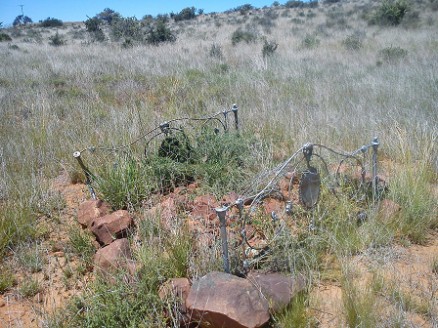
Bed-Tombstone, between Aberdeen and Graaff Reinet
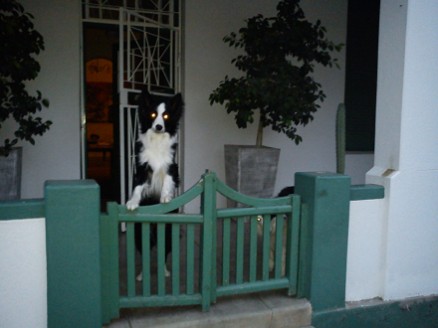
Inhabitant of Aberdeen
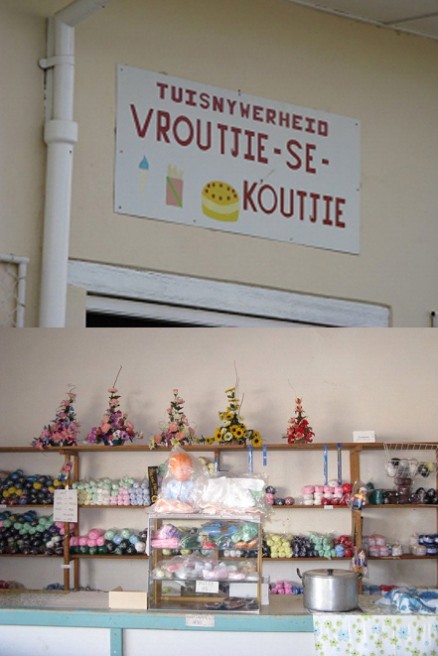
Home industry/grocery shop, Aberdeen
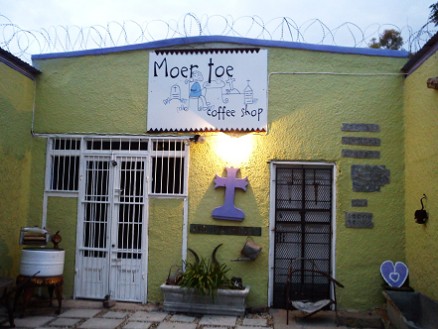
Aberdeen coffee shop
There is no luxury accommodation in Aberdeen, but we had fun staying in our economical self-catering accommodation and exploring the town’s little streets and quirky shops. Best of all, we had access to a sparkling little plaasdammetjie, a small round water reservoir for swimming. In the Karoo sun that dries clay into cracked zig zags, I stripped off my clothes, slipped into the water and watched dragon flies dip and dive. Instead of writing those poems about Verlore Vlakte, I lay on the baked earth at ant-eye level, watching tiny insects tracing the contours of succulents and thinking how my wife would call the moore pest control if she would see them. With no background murmur of traffic, no ceaseless crashing of waves on a seashore, the deep stillness of the Karoo seeps into your bones. But the landscape doesn’t come pristine. The hippie-version of the Karoo as Mother Earth won’t hold in the face of the Karoo Boere Baroque Voodoo Hoodoo.
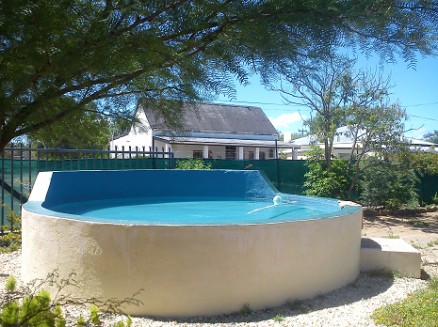
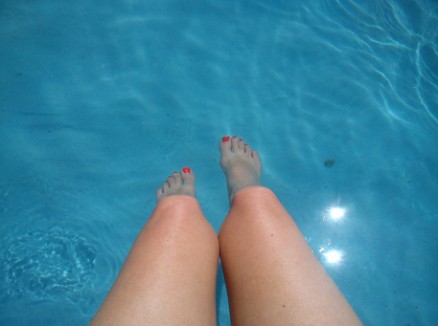
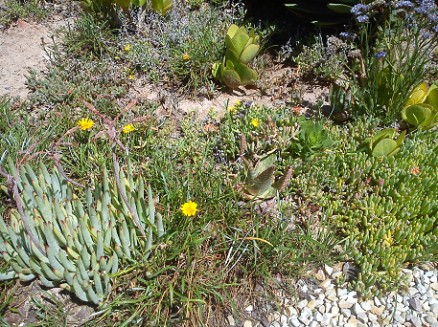
 SLiPStellenbosch Literary Project
SLiPStellenbosch Literary Project 
I love the guest house bed – release the tiger and then straight to heaven!